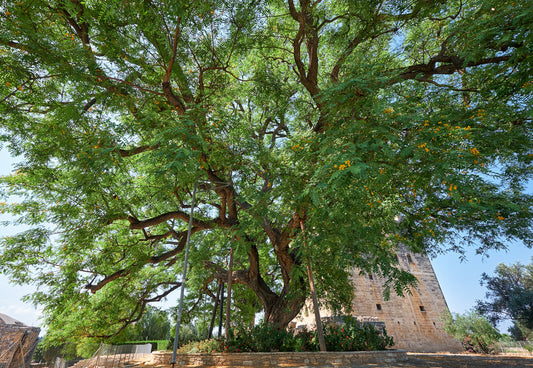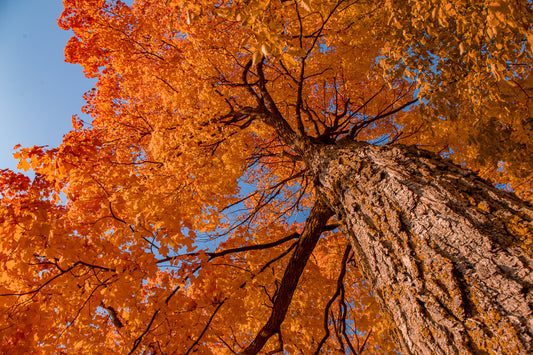Walnut trees and Forests
While there are no known forests comprised entirely of walnut trees, these majestic beings are found in various mixed forests across the globe. Their geographical spread is wide and varied, with the English walnut favoring the temperate regions of Southeast Europe to Southwest China, and the Black walnut inhabiting the deciduous forests of Eastern North America.
When it comes to climate, walnut trees favor regions with long, warm summers and cool winters. They need well-drained soil and plenty of sunlight, making them suitable for slopes and hilltops. Despite their preference for specific conditions, walnut trees are quite adaptable, capable of thriving in a variety of environments and soil types.
Delving deeper into the walnut tree's ecological interactions, these noble giants do not stand alone. They form mutually beneficial relationships with mycorrhizal fungi - a type of beneficial fungus that colonizes the tree's roots, helping the tree to absorb nutrients and water from the soil. This fungal network also acts as an extension of the tree's root system, enabling the walnut to reach further into the soil for resources.
Wildlife interactions are fundamental to the life cycle of a walnut tree. The tree's fruit serves as an important food source for various bird and mammal species. For instance, squirrels, one of the most well-known walnut lovers, consume the nutritious nuts and play a significant role in the tree's seed dispersal. As they hoard and bury the walnuts for winter, some nuts are forgotten and subsequently germinate, giving rise to new walnut trees in the process.
Likewise, certain bird species, such as jays, are also instrumental in the walnut's dispersal strategy. They carry the nuts to various locations, sometimes flying considerable distances, thereby promoting the tree's propagation. This process has facilitated the geographical spread of walnut trees, ensuring their enduring presence in the ecosystem. You might have even heard of (or seen yourself!) crows dropping walnuts from tens of meters in the air to crack their nuts. Ingenious ones even leave them in the path of cars, using us as nutcrackers.
But perhaps the most intriguing aspect of the walnut tree's ecology is its unique defense mechanism known as allelopathy. Walnut trees produce a chemical compound called juglone, which is released into the soil around them through their roots, bark, leaves, and even their fruits. This compound can inhibit the growth of certain plants in the vicinity, effectively reducing competition for nutrients and space. This characteristic explains why certain plants may struggle to grow near walnut trees. However, it's worth noting that many other plants, such as melons, squashes, beans, corn, and certain species of fruit trees, are resistant to juglone and can thrive alongside walnut trees.
Walnut trees play significant roles in the ecosystems they inhabit. Their extensive root systems help stabilize the soil and prevent erosion, making them valuable in areas prone to landslides or soil wash-off. The deep shade cast by their broad canopies creates a microclimate beneath, providing a haven for various understory plants and offering protection to smaller organisms. Furthermore, walnut trees contribute to nutrient cycling in the ecosystem through their leaf litter and decaying wood, enriching the soil and supporting the growth of other plants. As keystone species, walnut trees provide nourishment and shelter for a range of wildlife, from birds and mammals that rely on their fruits, to insects and fungi that form symbiotic relationships. By fostering biodiversity and sustaining the intricate web of life, walnut trees are essential components of healthy and thriving ecosystems.

Threats and challenges
Wild walnut trees face a range of threats that pose significant challenges to their survival and ecological roles. Habitat loss and fragmentation due to deforestation, urbanization, and agricultural expansion are major concerns. As human activities encroach upon natural areas, the once vast and diverse forests that supported wild walnut trees are increasingly fragmented and reduced in size. This loss of habitat disrupts the connectivity of walnut tree populations, hinders genetic exchange, and limits the ability of these trees to adapt to changing environmental conditions.
Furthermore, the introduction of invasive species poses a threat to wild walnut trees. Invasive pests and diseases, such as the walnut twig beetle and Thousand Cankers Disease, can devastate walnut populations. These pests and diseases can spread rapidly, causing tree mortality and impacting the overall health and vitality of walnut ecosystems. Efforts to monitor and control the spread of invasive species, along with promoting the conservation and restoration of natural habitats, are vital for protecting wild walnut trees and preserving their ecological functions within the larger forest ecosystems they inhabit.

In a (wal)nutshell
The enduring beauty and rich history of walnut wood invite us to cherish and value it not only for its aesthetic appeal but also for the stories it carries. Each piece of walnut furniture represents the legacy of a tree that has stood the test of time, gracefully witnessing the passage of years. By treasuring and caring for our walnut furniture, we contribute to the preservation of these remarkable trees and reduce the demand for further harvesting of walnut wood.
Article by: Andrei Mihail, see more about the author here





